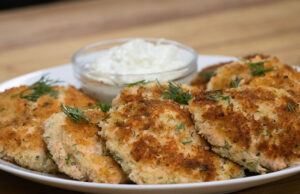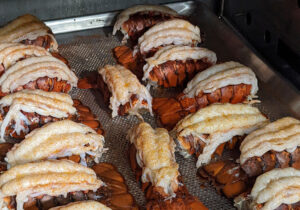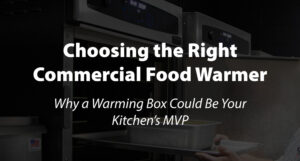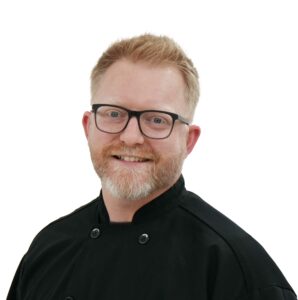
Ryan Tucker, Corporate Research and Development Chef
With 15 years in foodservice, Ryan brings a passion for cooking rooted in family holiday meals. His background spans hotels, country clubs, restaurants, business ownership, and school nutrition.
Trim, steam, and hold salmon scraps with CVap, then transform them into crispy, sellable cakes.
Reducing food waste isn’t simply good for the environment, it’s good for business. In my experience, every trim, scrap, or byproduct you can repurpose means less money thrown away and more value on the plate. Seafood is one of the most expensive items to discard, and fresh salmon is a perfect example. I’ve seen operators cut off trimmings and edges that never make it to a customer. To me, those “scraps” are an opportunity to create a sellable, high-margin dish.
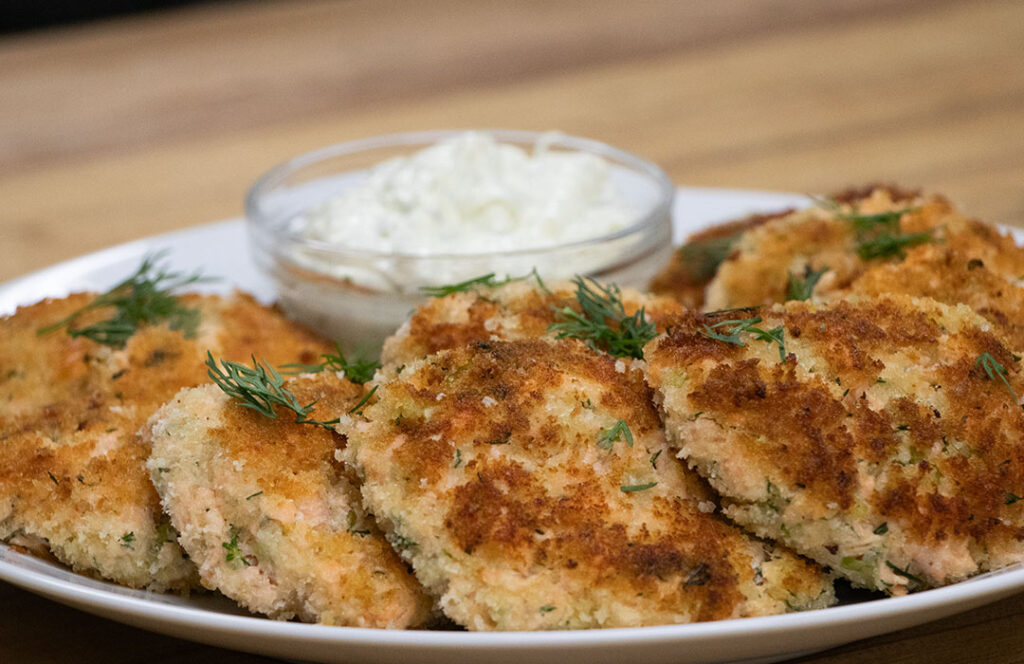
Salmon cakes are one of my favorite ways to turn trimmings into profit. They’re simple, versatile, and work as an appetizer, entrée, or small plate depending on how you portion and present them. I’m going to show you how I use CVap to get the most out of salmon scraps, steaming them first for tenderness, pan-frying for crisp texture, and finally holding them hot and ready for service. They’re a delicious, customer-ready product that keep waste to a minimum.
Why I Love Salmon Cakes
Seafood margins can be tight. As of August 2025, the average wholesale cost of salmon fillets in $10.25 per pound. Tossing even a few pounds of salmon trimmings per week adds up fast, and that’s money gone straight in the trash. By repurposing those bits into salmon cakes, we can help operators reduce costs while creating a dish that customers are happy to pay for.
There’s also a sustainability story behind it. These days, more guests want to support restaurants that reduce waste and care about the planet. A simple menu note, like “made with sustainably sourced salmon” lets customers know we’re thoughtful in the kitchen, and it subtly communicates quality and care.
The Settings
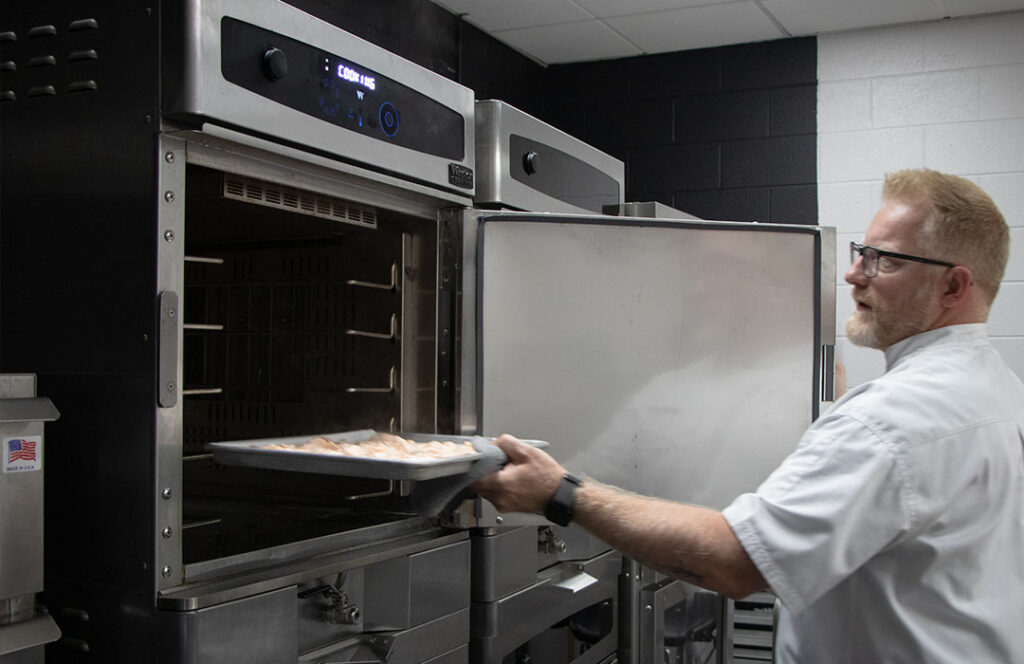
Ingredients
- ½ Cup Mayonnaise
- 2 Tbs Fresh Lemon Juice
- 2 tsp Dijon Mustard
- 2 tsp Old Bay Seasoning
- 1 ½ tsp Kosher Salt
- ½ tsp Black Pepper
- 2 ½ lbs. Skinless Salmon Trimmings
- 2 ½ Cups Panko Breadcrumbs (divided)
- ½ Cup Thinly Sliced Green Onions
- 4 Tbs Fresh Dill (finely chopped)
- 1 Cup Avocado Oil
The Process
- Steam the Salmon in CVap: Start by gently steaming the salmon in a preheated CVap oven until it’s flaky, about 10 to 15 minutes. CVap’s controlled vapor and air environment keeps the fish moist and tender the perfect foundation for mixing into cakes. Once cooked, let the salmon cool before combining with the other ingredients.
- Mix Ingredients: In a large bowl, whisk together the mayonnaise, lemon juice, mustard, Old Bay, salt, and pepper. Then fold in the diced salmon, ¼ cup of panko, scallions, and dill until everything is evenly combined.
- Form the Cakes: Place the remaining 1 cup of panko in a shallow pan. Using a ⅓-cup measure, scoop the salmon mixture and shape it into compact cakes about 1 inch high. Then coat each cake in panko and set it aside.
- Pan Fry the Cakes: Heat the avocado oil in a medium nonstick skillet over medium-high heat until it is shimmering. Place half of the salmon cakes in the skillet and cook without moving until golden brown, about two minutes. Carefully flip the cakes and cook until the second side is golden brown, about two minutes more. Reduce the heat to medium if the cakes are browning too quickly. Repeat with the remaining cakes (no need to change the oil).
- Serve or Hold in CVap: Serve immediately or transfer fried cakes to hold in a CVap at 135°F Vapor/195°F Air. They’ll stay hot and crisp for up to two hours without drying out.
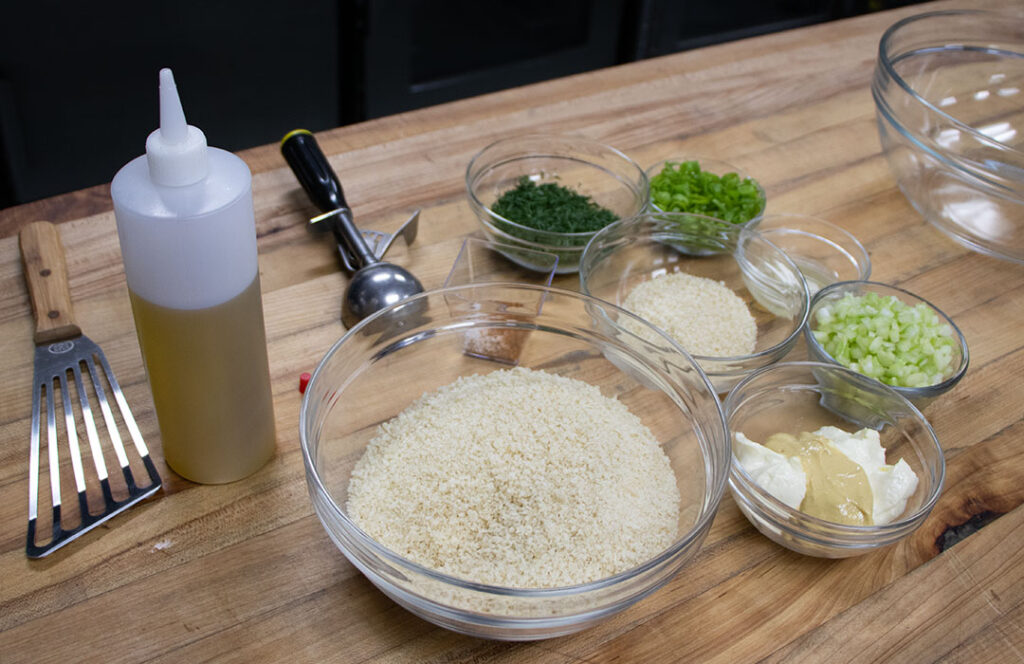
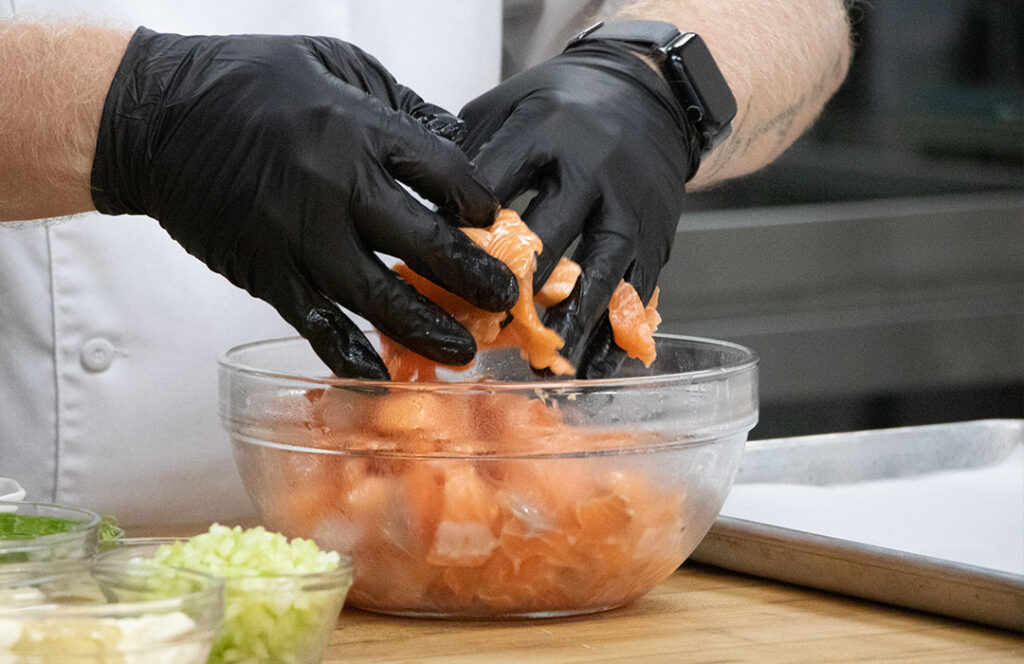
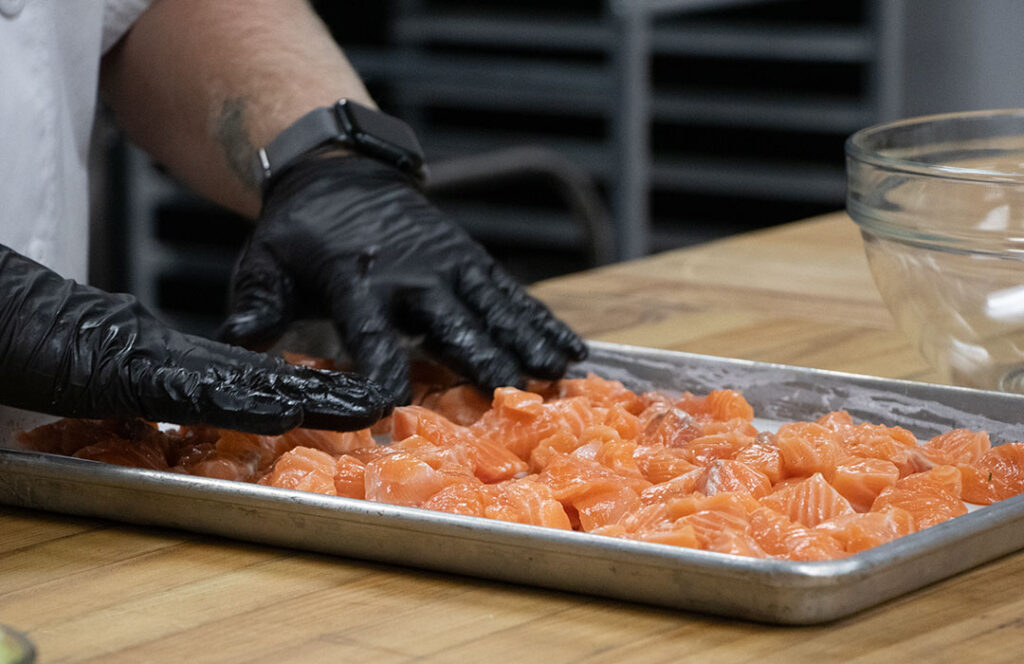
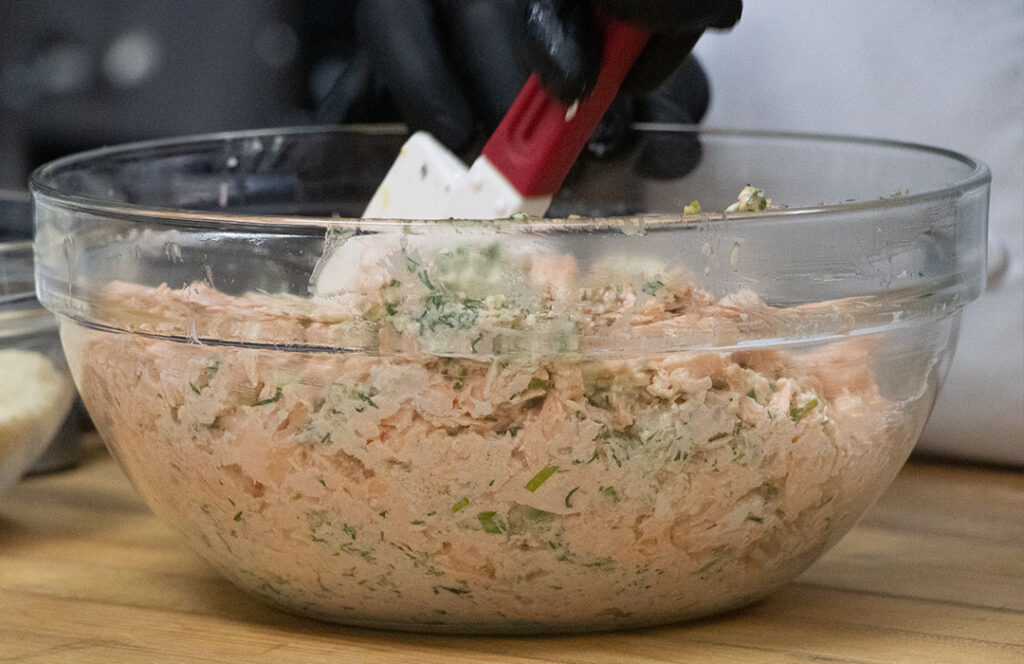

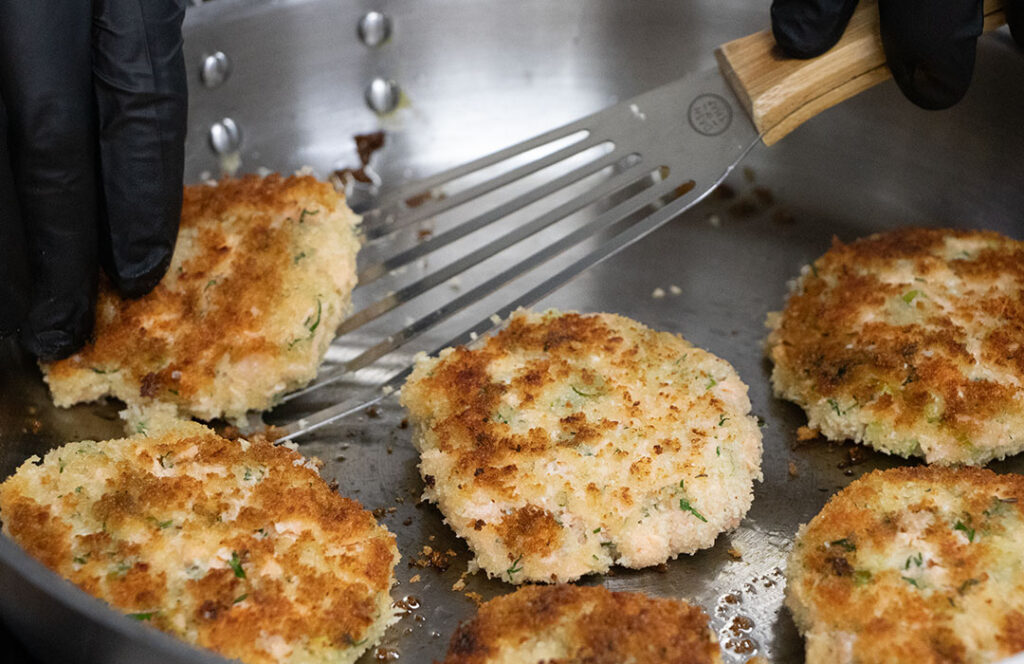
Chef’s Notes
- Prep Ahead: You can form the cakes and refrigerate them for a few hours before cooking. This helps maintain consistency and speeds up service.
- Adjusting Moisture: If the mixture feels too wet, add a little more panko. Too dry? A splash of mayonnaise or lemon juice helps.
- Scaling: This recipe scales well for larger service or catering. Just multiply ingredients while keeping the ratios consistent.
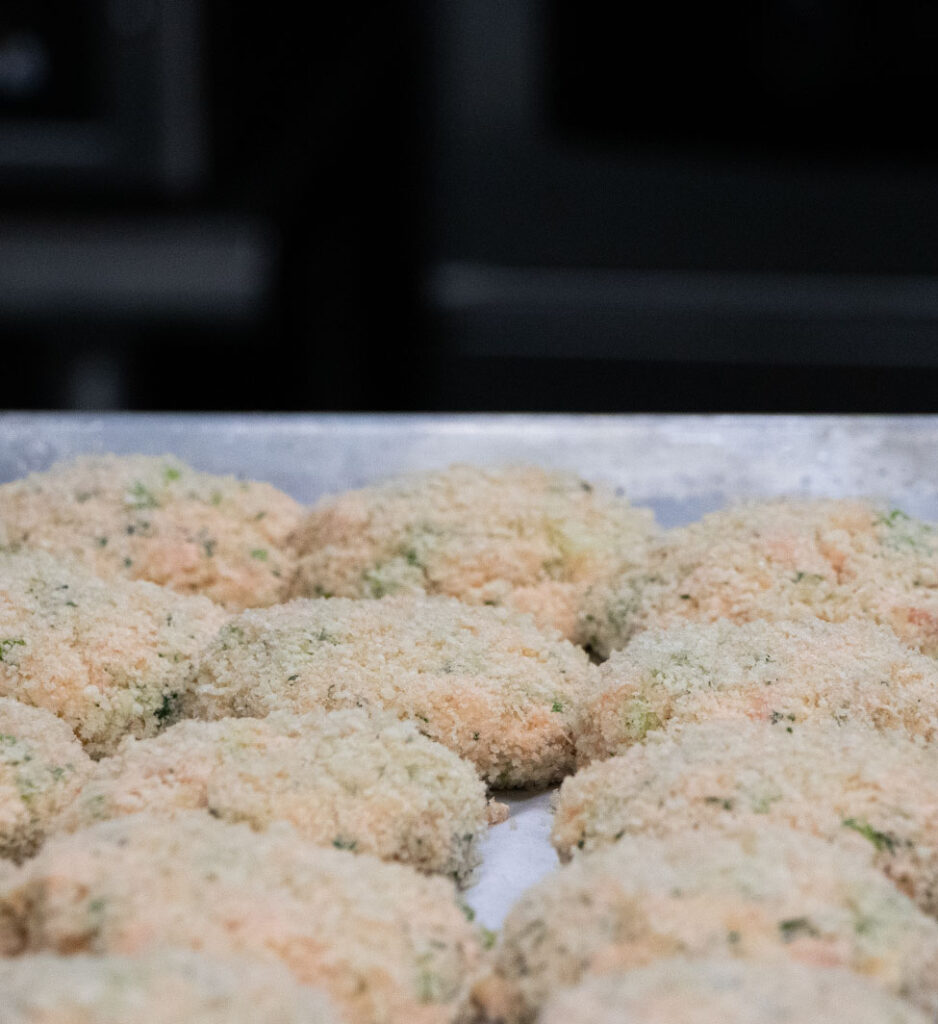
Flavor Variations to Consider
Sometimes I like to switch things up to fit different menus or seasons:
- Cajun Salmon Cakes: Add smoked paprika and cayenne for a little heat.
- Asian-Inspired: Grated ginger, scallions, and a touch of soy sauce work beautifully.
- Mediterranean: Feta, olives, and fresh parsley bring a bright twist.
These variations keep the menu interesting without adding significant food costs.
Pairings to Ponder
As with any dish, choosing the right accompaniment makes a substantial difference.
If you’re serving the cakes as an appetizer:
- Lemon-dill aioli (bright and herbaceous)
- Classic tartar sauce (always a crowd-pleaser)
As an entrée:
- Mixed greens with lemon vinaigrette (keeps the plate light and fresh)
- Cucumber-dill salad (refreshing and complements the dill in the cakes)
Sides for heartier service:
- Garlic mashed potatoes
- Roasted asparagus
- Sweet potato fries
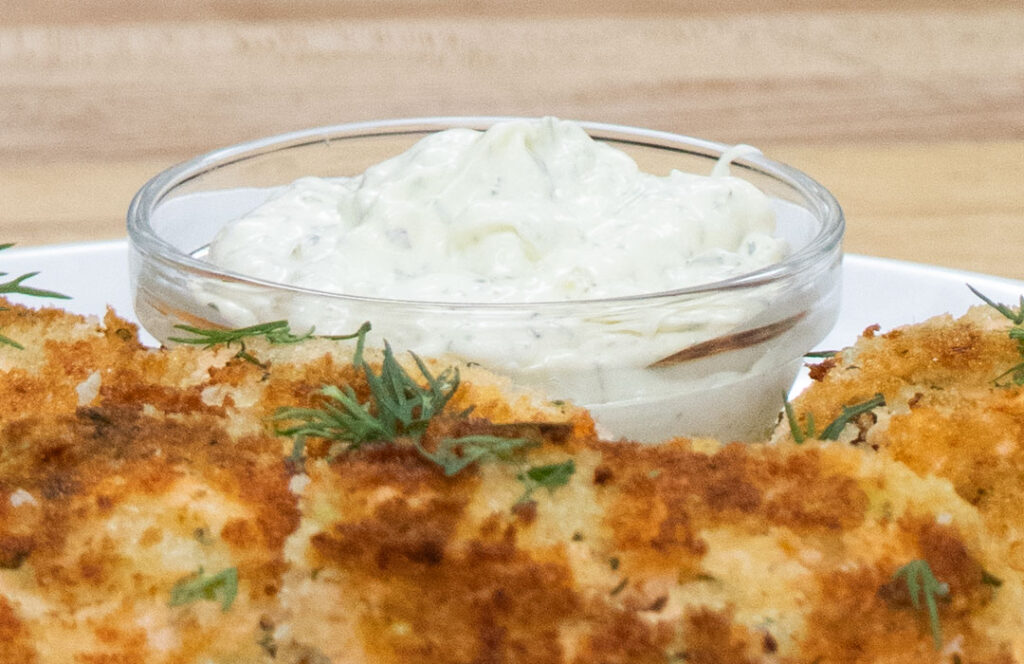
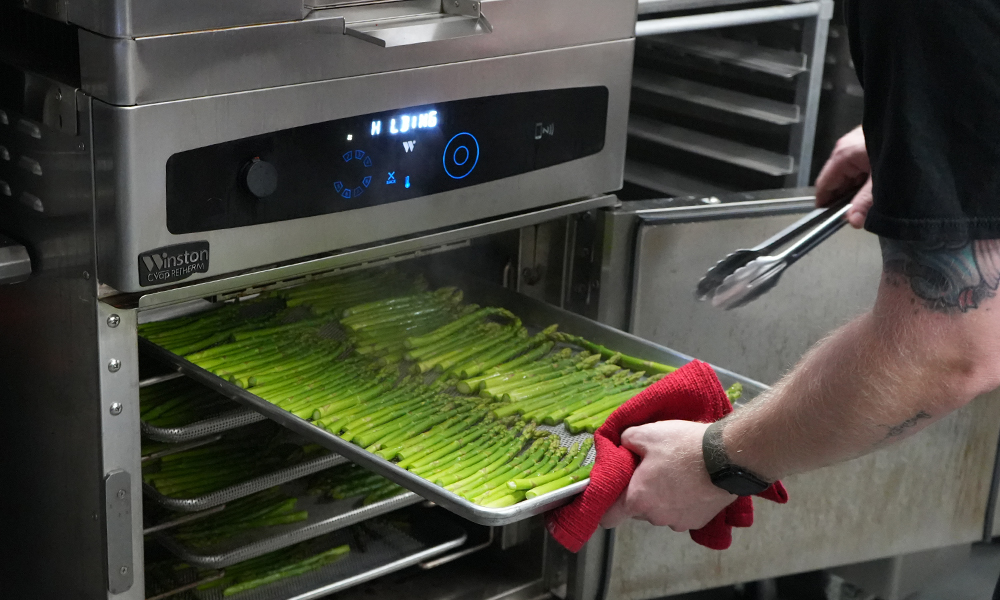
Repurposing salmon trimmings into salmon cakes is a simple step that drives big results. CVap makes the process smarter; steam for tender prep, pan-fry for crispness, then hold hot without losing quality. The payoff? It cuts food waste, maximizes your ingredient investment, and creates a versatile menu item that customers love. With CVap, I can prep ahead, hold safely, and serve consistently without sacrificing quality.
For me, reducing waste doesn’t have to be complicated. By turning scraps into revenue-generating dishes, I run a smarter, more profitable kitchen while supporting sustainable practices. Want more ideas about how CVap can boost your sustainability efforts? Check out this blog!
Let’s Share Ideas
I know many of you have clever ways to turn kitchen scraps into customer favorites. I’d love to hear them! Share your best waste-saving recipe hack and join a community of operators who are turning sustainability into profit.
